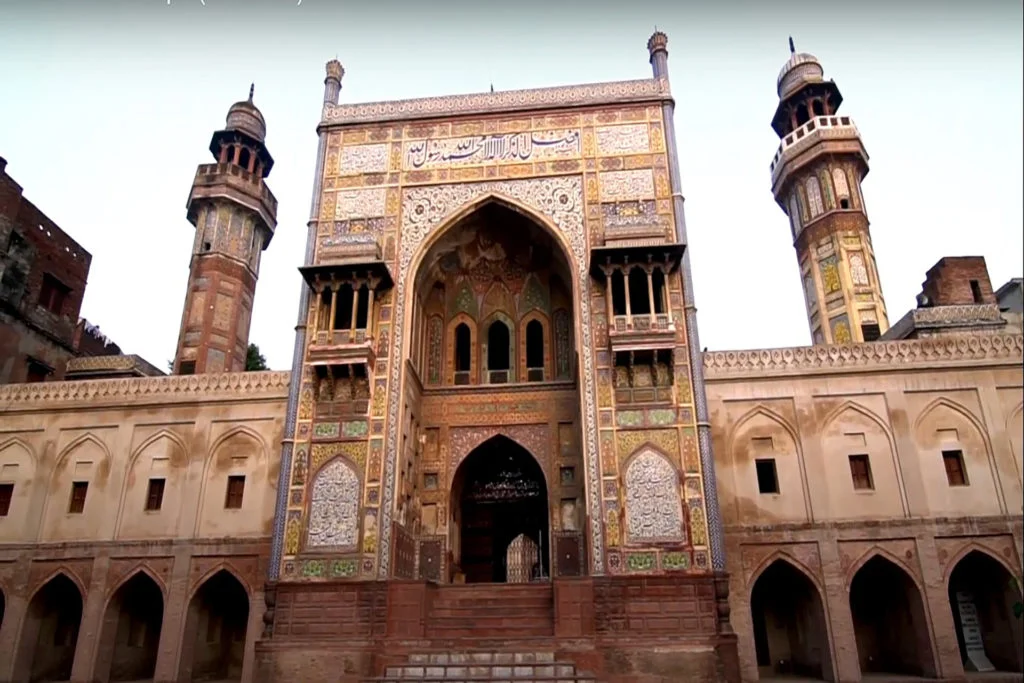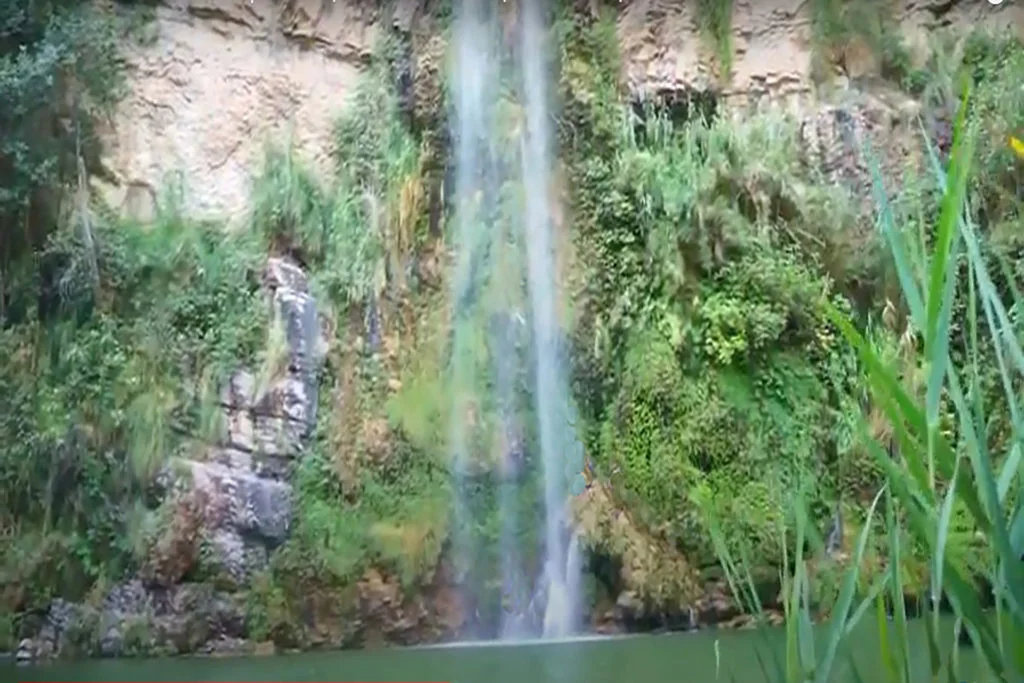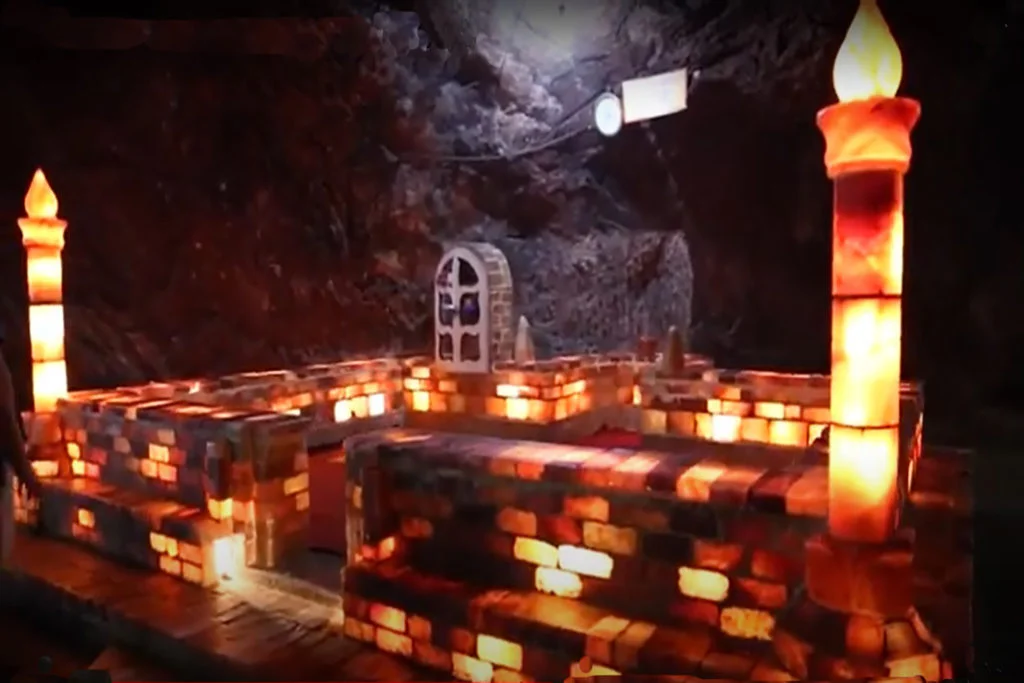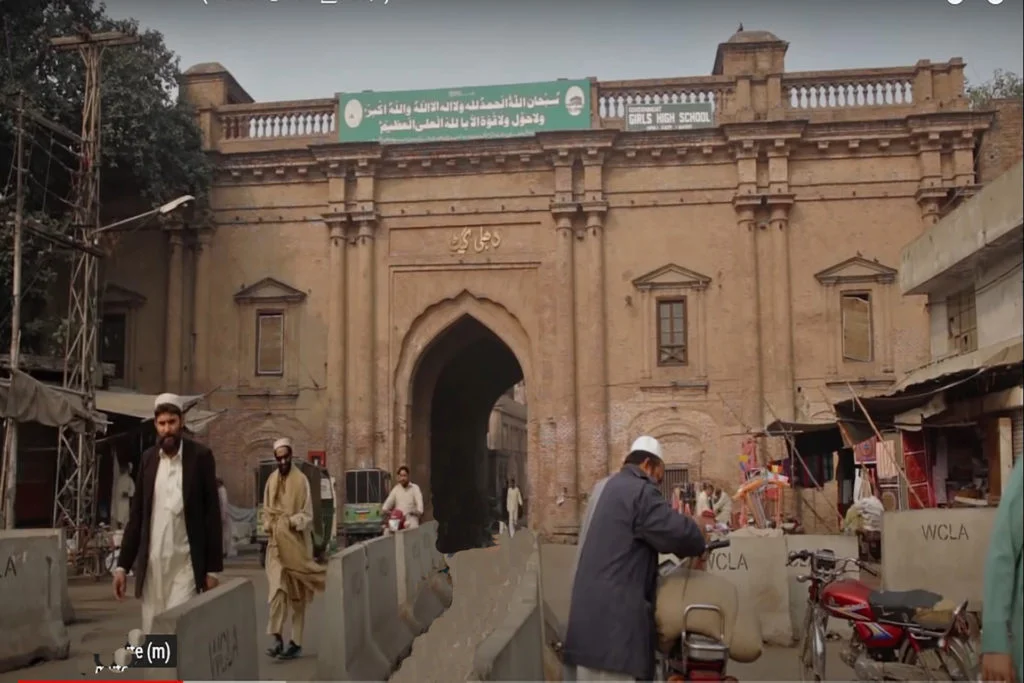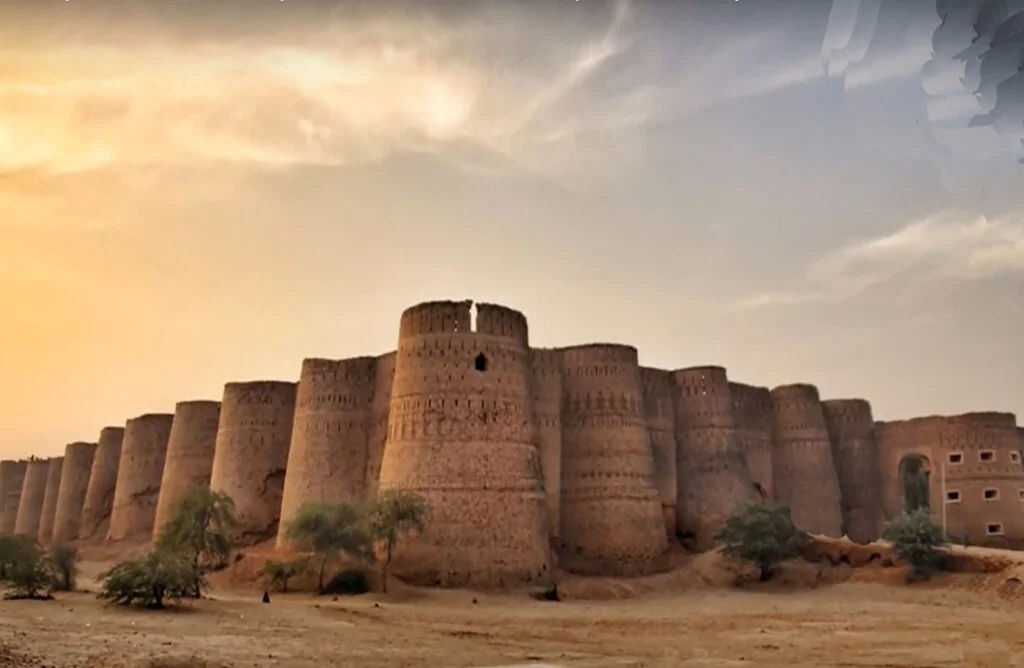Gurdwara Guru Nanak Panja Sahib, also known as Panja Sahib, is a prominent Sikh religious site located in Hasan Abdal, a town in the Attock District of Punjab, Pakistan. It is a significant pilgrimage destination for Sikhs and holds great historical and religious importance in Sikhism. The Gurdwara is named after a large imprinted handprint of Guru Nanak Dev Ji, the founder of Sikhism, which is preserved at this location.
Location of Panja Sahib Hasan Abdal
Gurdwara Guru Nanak Panja Sahib Pakistan is located in Hasan Abdal, 48 kilometers from Rawalpindi in Pakistan. This is one of the most sacred places of Sikhism because it marks the place where the founder of the faith, Guru Nanak Dev visited and imparted an important lesson to his followers. What is still visible is the sacred rock inscribed by Guru Nanak.
Thousands of faithful Sikhs from all over the world visit this temple. However, twice a year, during special festivals, a large number of Sikh pilgrims flock to this Gurdwara from all corners of the globe. Special visas are issued by the Pakistani Government to meet the growing demand.
The word “Panja” in Punjabi means “palm of the hand” from the word “panj” meaning “five”.
History of Panja Sahib
Guru Nanak and Bhai Mardana arrived at Hasan Abdal in Baisakh Samwat in 1578 B.C. corresponding to 1521 A.D. during the summer. Under a cool shady tree, Guru Nanak and Bhai Mardana began repeating kirtan (sacred songs) and their devotees gathered. This upset Wali Qandhari but he could not help himself.
According to legend, Bhai Mardana was sent three times to Wali Qandhari to give him water to quench his thirst. Wali Qandhari rejected his request and mistreated him. Despite this, Mardana was still submissive to his request.
Wali remarked sarcastically: “Why not ask your pastor whom you serve?” Mardana returned to Guru in a state of mourning and said, “O king! Guru replied, “Oh Bhai Mardana! Repeat the Name of God, the Almighty; and drink the water of your will.”
Guru set aside a large stone lying nearby and a clean water source came out and began to flow continuously. Bhai Mardana quenched his thirst and felt grateful to Guru. On the other hand, at about the same time, the spring of Wali Qandhari dried up.
Seeing this, Wali angrily threw half of the mountain, a large rock towards Guru from the top of the hill. Guru erected a hand-rolled rock leaving his hand printed on the rock. Seeing that miracle, Wali became Guru’s attendant. This sacred and revered place is now known as the Panja Sahib.
Detailed Description of Gurdwara Guru Nanak Panja Sahib Pakistan
Like all myths and legends, the story of Panja Sahib sounds like a mixture of myths, facts, and myths – a myth to the unbeliever, that is. There are differences in the details between different versions of the story one hears or reads online. However, one common thread runs through them all. Apart from the Sikh guardian or Grant guardian of the sanctuary I also spoke to some people of the Hasan Abdal area about the Panja Sahib. Everyone gave me the same account, if not exactly the same; and they all seemed to believe again. Here is the story with its key details.
Sometime between 1510 and 1520 Guru Nanak is said to have traveled to Arab countries to visit, among other places, Mecca and Baghdad. Some suggest that he even performed a hajj but there is no complete proof of that. (Giving the reader a glimpse of the timeline, it was just before the Babar invasion and Mughal rule of India.) On his way back from his foreign residence Guru Nanak passed through Kabul and Peshawar and then, after crossing Indus, stopped at a small village at the foot of a steep hill, near Margallas, where Hasan Abdal is today.
Intrigued by his teachings, Muslims and Hindus from the area and the surrounding area began flocking to Guru Nanak. At the top of the hill behind Guru’s house lived a ‘pir’ (a ‘holy’ Muslim person). He was called Baba Wali Kandhari. His surname refers to his origin in Kandahar, Afghanistan. Apart from having a better viewing area where he could see everything that was happening in the area below, Father Kandhari also had a great opportunity to have a source of fresh water nearby. The well was the only source of water for the underprivileged.
Father Kandhari could not help but notice the ‘new saint in the block’, as it were. He noticed that more people were flocking to Guru Nanak than were those visiting him. She felt a little annoyed with Gugu. What should he do? If he could not stop the flow of people towards Guru, he thought he could stop the flow of water in the valley below and thus chase him away. And stop the water that you did.
Expected to be offended by the water cut, a team of people from a small area approached Baba Kandhari to ask him to be kind enough to allow the water to flow again. But Father angrily retaliated, mocking them for not asking their Grandfather to supply them with water.
When Guru Nanak heard this he asked a student and his longtime friend, Bhai Mardana (a former Muslim), to go to Father Kandhari and plead with him on the matter of the local people. But Father did not give up on Bhai Mardana and returned empty-handed. Guru Nanak sent Bhai Mardana again, again, to ask Father for water but to no avail.
In desperation, the people turned to Guru Nanak and asked him what he had done. According to the story, Guru Nanak told them not to give up hope and trust in God and then he pointed to a large stone, asking them to remove it from the ground. When they push the stone aside clean water comes out of the ground, enough for toilet needs and more!
Father Kandhari saw all of this on the hill and was surprised and disappointed at the same time. But her frustration turned to shock and anger when she found out that her own well was dry. Enough, he thought and decided to get rid of Guru. He pushed a large stone down the hill towards Gugu, thinking that it would crush Guru and the people around him.
The stone rolled away and gained momentum and kicked the dust as it moved. When the people heard the thunder, they saw a large rock fall to the ground and they trembled and started to run. But Guru Nanak remained calm and continued to sit where he was. As the rock approached, Guru Nanak raised his right hand in a low voice as if commanding the rock to stand. The stone pushed against his hand!
Guru’s open hand was carved in stone as if pressed into wax. When Father Kandhari saw this he did not need further evidence of Guru’s spiritual reach. He came down the hill, touched Guru Nanak’s feet, and joined a group of his devotees. A handwriting stone has been installed today in the concrete structure of the Panja Sahib building. Clean, fresh water flows out of place behind a rock and spills over into a very large lake. The deep texture of the right hand is clearly visible on the rock beneath a small sheet of water flowing over it.
Near the lake, on a high plateau stands a beautiful Gurdwara built in the Mughal style by Maharaja Ranjit Singh (1780-1839). The Gurdwara preserves the Guru Granth Sahib – the sacred book of the Sikhs. A large two-story hostel of Yatrees or pilgrims around the courtyard, lake, and Gurdwara. There are many plaques and signs announcing the names of donors and various directions in Gurmukhi, English, and Urdu.
In the courtyard of Gurdwara Guru Nanak Panja Sahib Pakistan, one can easily see the top of the hill where Baba Wali Kandhari camped and where he is said to have rolled a stone. A modern communication tower is flourishing in this area now. The hill has also become a sanctuary called Baba Kandhari and attracts many devotees to the surrounding area. Even Sikh pilgrims heading for Panja Sahib climbed a hill, a distance of more than a mile, to visit the shrine.
Pictures Gallery
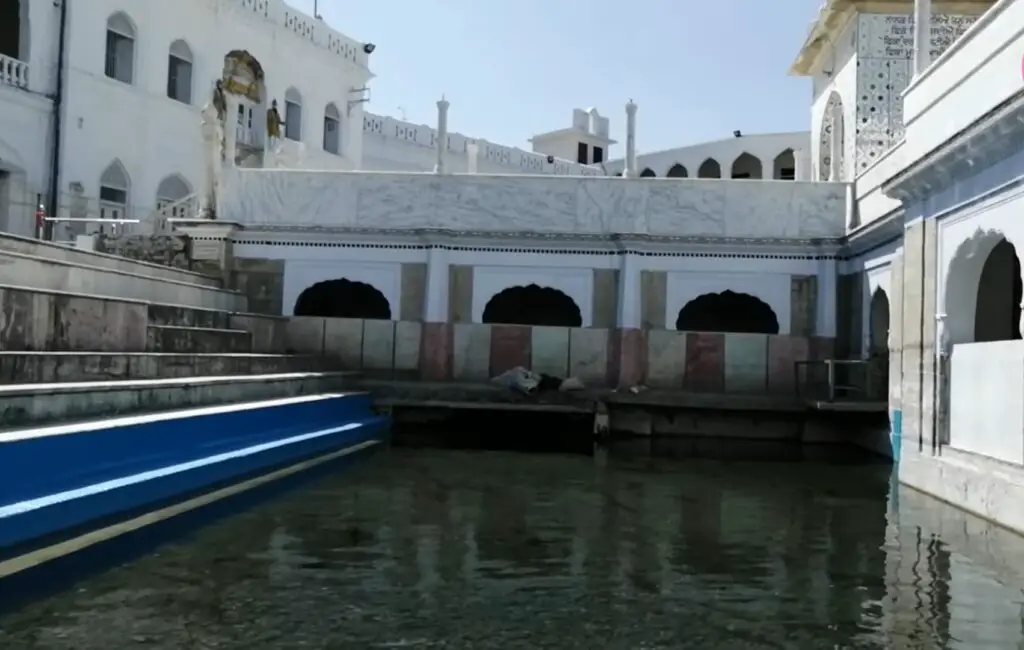
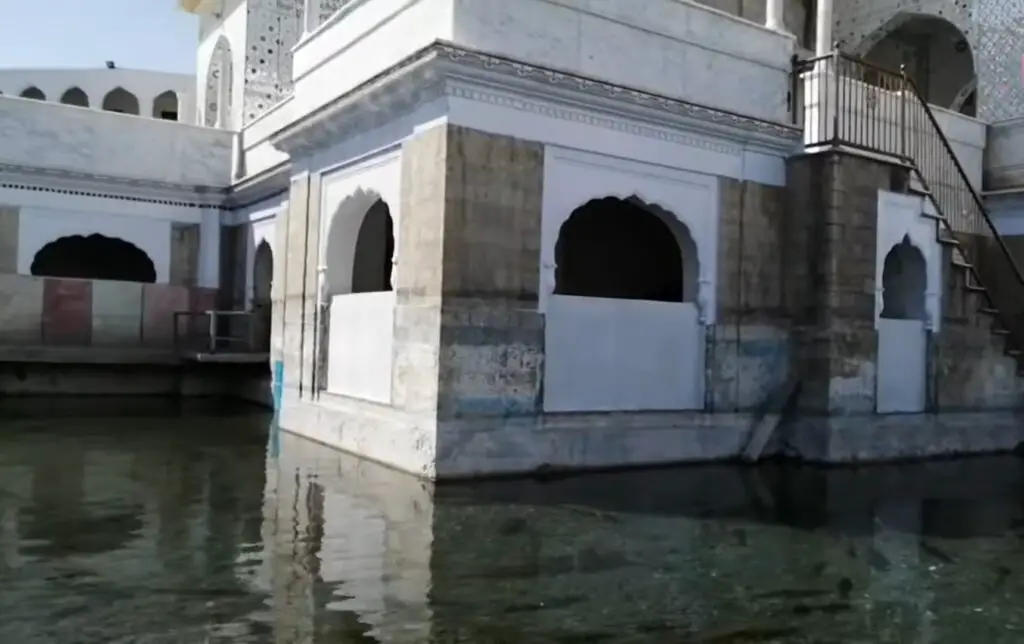
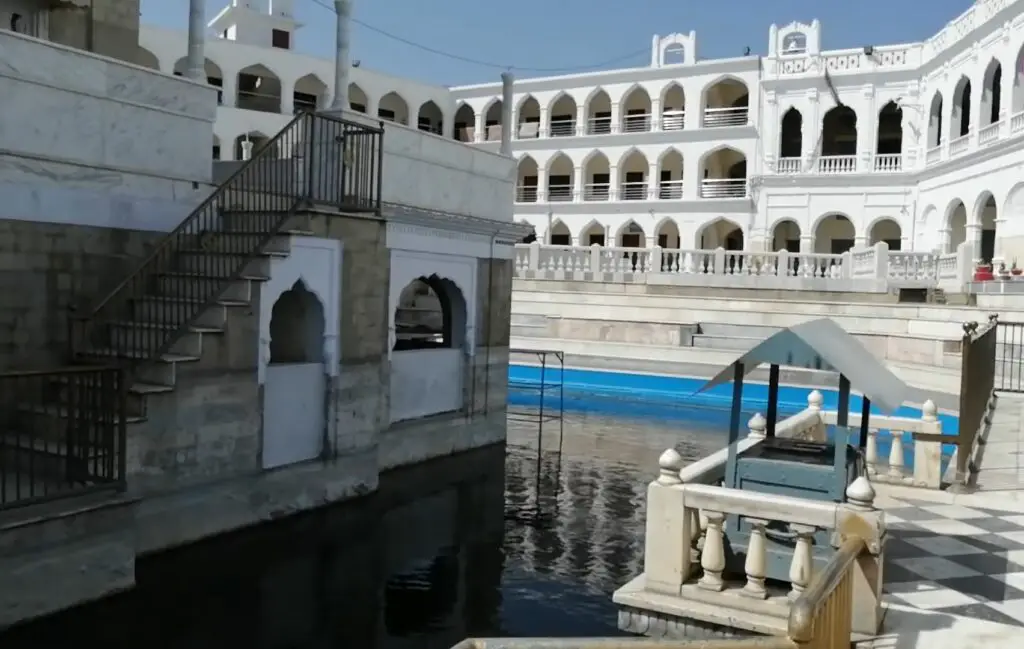
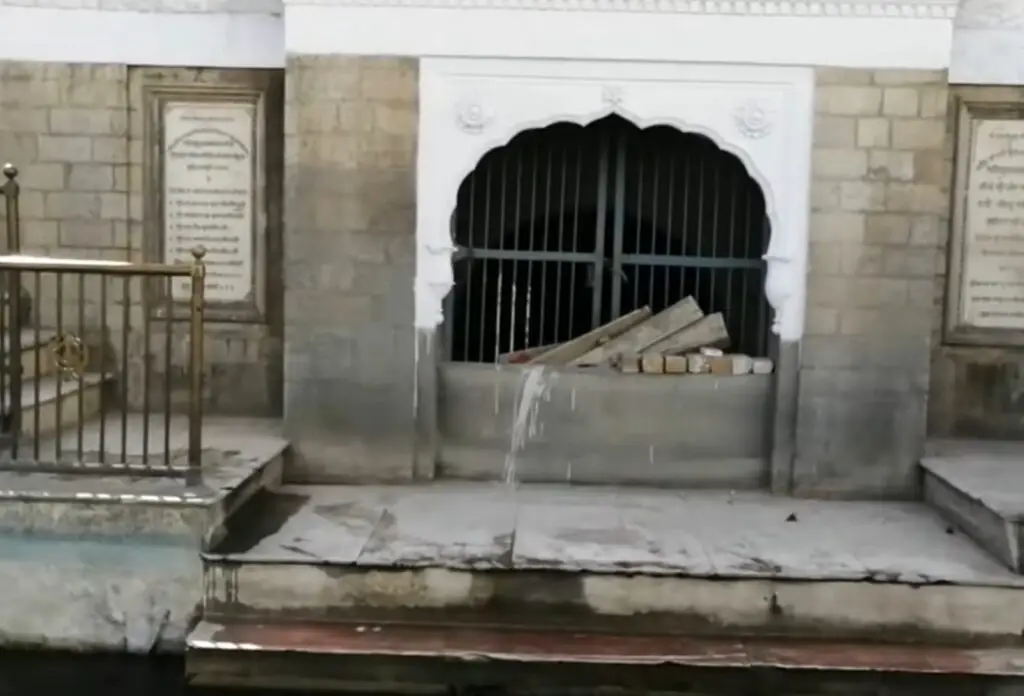
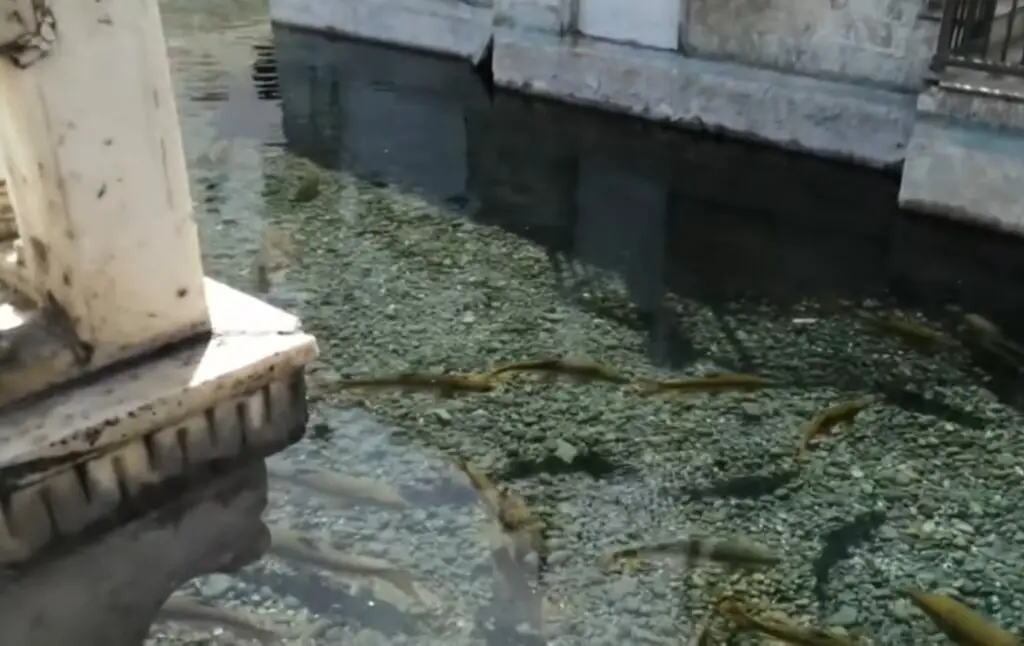
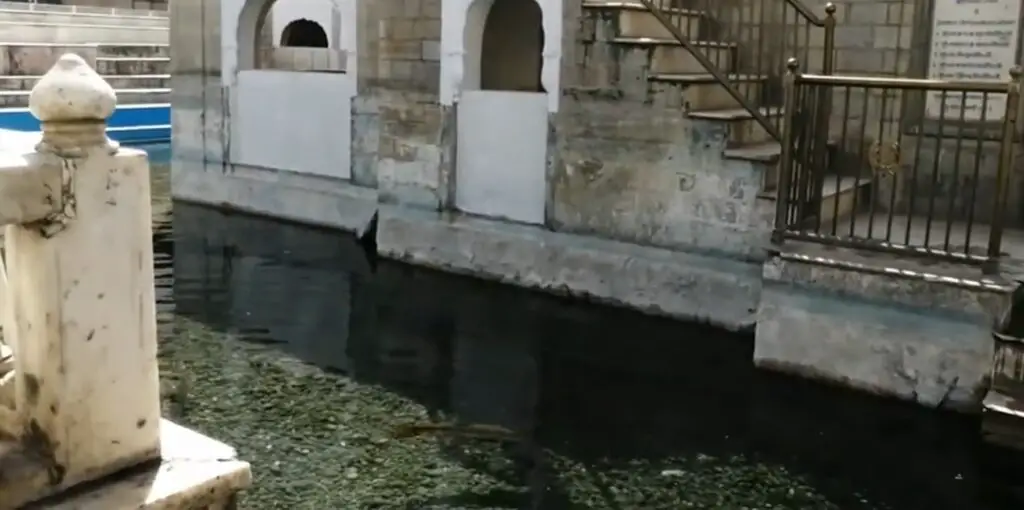
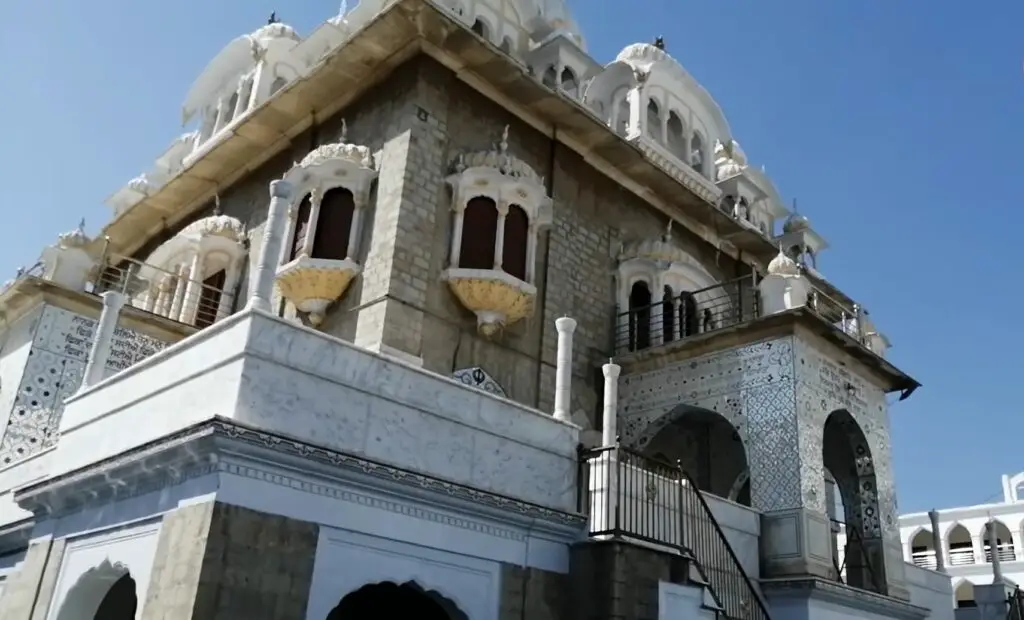
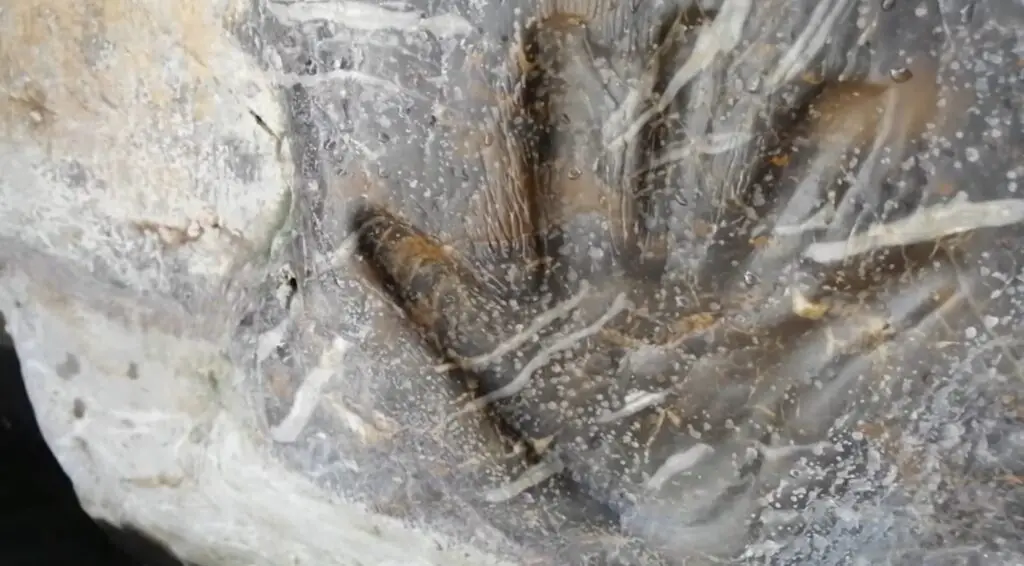
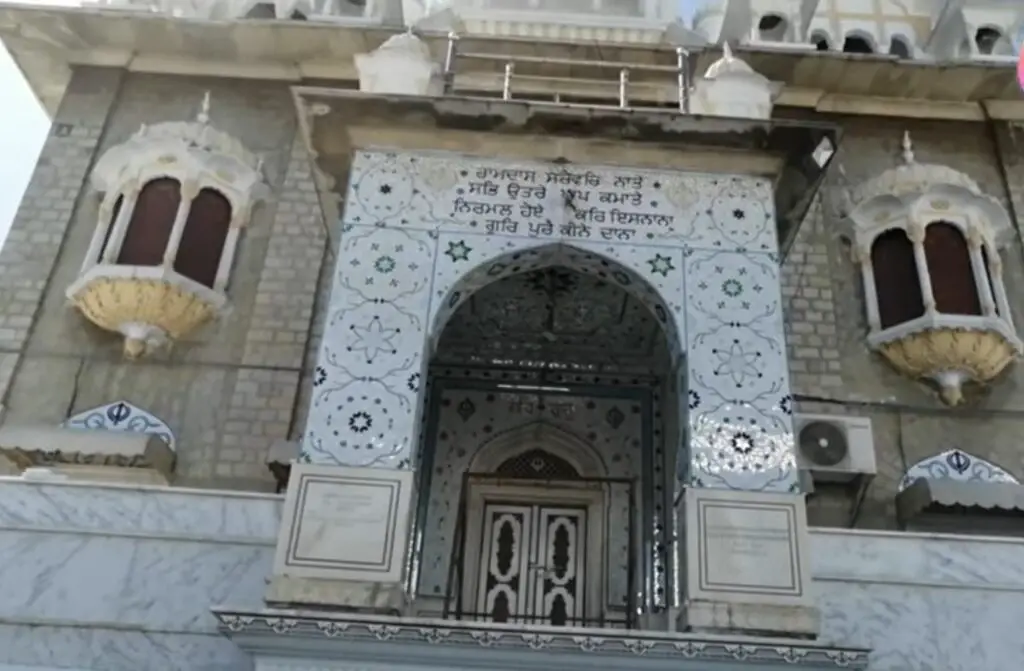
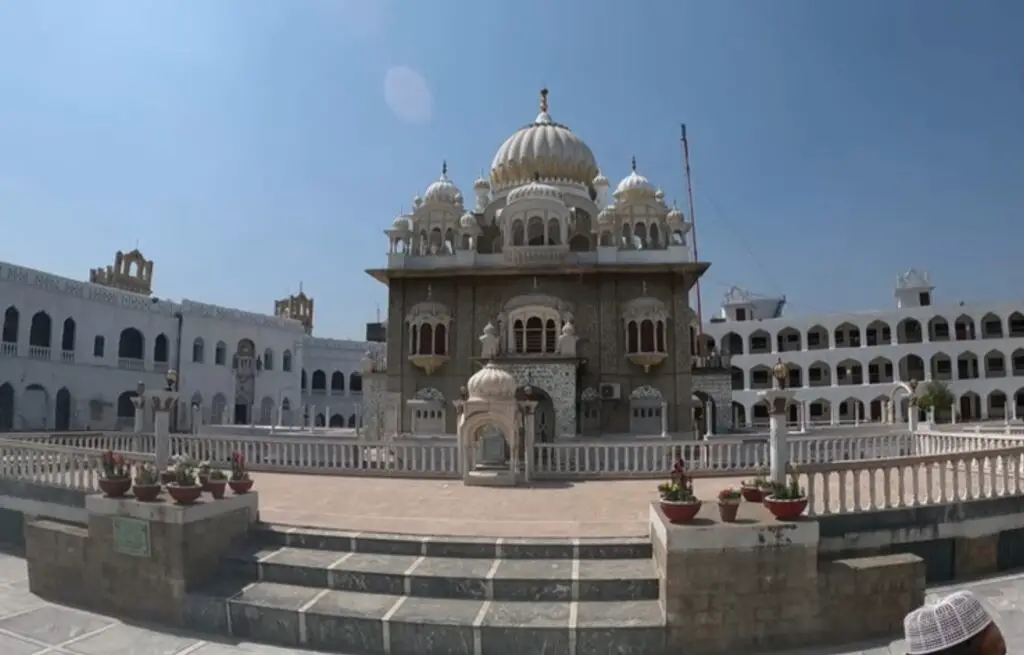
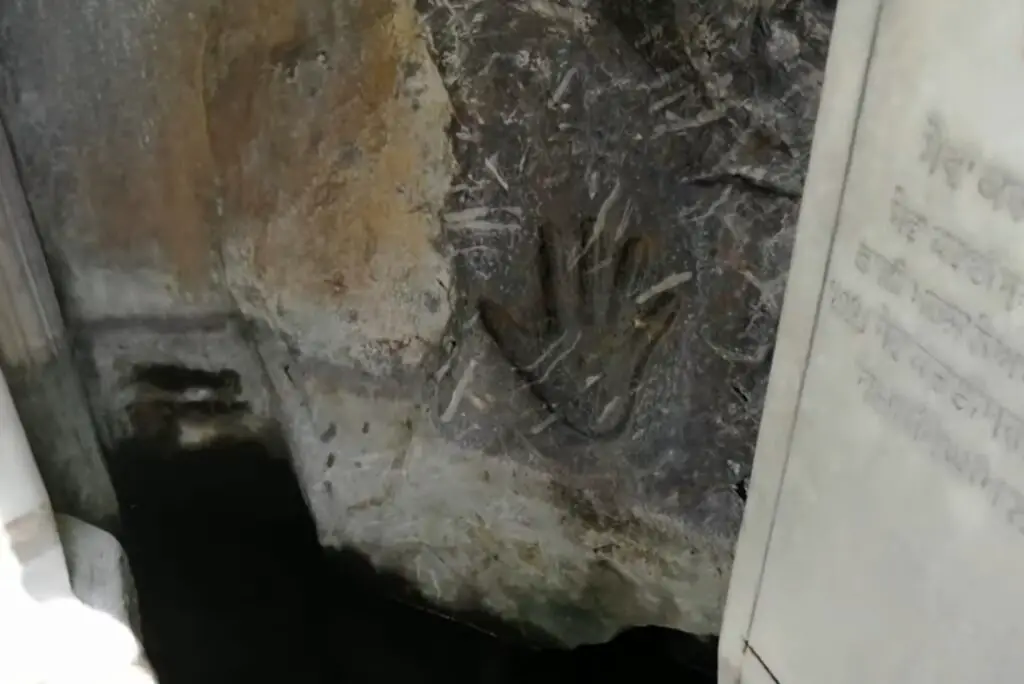
Key Features of Gurdawara Panja Sahib Hassan Abdal
Key features and significance of Gurdwara Guru Nanak Panja Sahib:
- Handprint of Guru Nanak: The primary attraction of this gurdwara is the imprint of Guru Nanak’s hand on a large boulder. According to Sikh tradition, Guru Nanak visited this site during his extensive travels, and the handprint was left behind when he placed his hand on the boulder. This handprint is considered a sacred relic by Sikhs and is believed to have healing and blessing properties.
- Religious Significance: Gurdwara Panja Sahib is a place of deep religious significance for Sikhs. Pilgrims from all over the world visit this gurdwara to pay their respects, seek blessings, and engage in religious ceremonies and rituals.
- Historical Importance: Besides its religious significance, this gurdwara has historical value as it marks a spot where Guru Nanak stopped during his journeys to spread the teachings of Sikhism. It serves as a reminder of his travels and his contributions to the Sikh faith.
- Architectural Beauty: The gurdwara is a beautiful architectural structure, with a distinct white dome and other features that are typical of Sikh gurdwara architecture. The complex includes a spacious prayer hall, a langar (community kitchen) where free meals are served to visitors, and accommodations for pilgrims.
- Religious Practices: Daily prayers, kirtan (devotional singing), and religious gatherings are held at the gurdwara. Special celebrations and events, such as Guru Nanak’s birth anniversary (Gurpurab), attract large congregations of devotees.
Gurdwara Guru Nanak Panja Sahib Pakistan shrine complex is spartan but clean and well maintained. It can be done with a new coat of paint, inside and out. And if I could, I would remove the busy highway from the highway to the city and to the Panja Sahib building.
The guardian of the gurdwara or Granthi, a very large, respectable, and gentle man, whose name was Saddam Singh (yes, Saddam Singh!), Allowed us to enter the gurdwara.
While visiting the Panja Sahib temple and hearing the news one could not identify the significant similarities between other Sikhs and Muslim cultures. The story of Guru Nanak’s divination water is reminiscent of the story of Hazrat Hajra who desperately wanted his child water in the Arabian Desert and the child miraculously kicked water in the sand.
Also, the Sikhs are amazed at the permanence and abundance of pure water flowing to their sanctuary in Hasan Abdal as Muslims have the eternity and abundance of water in Zamzam. The Sikhs treat the water of the Panja Sahib with respect as the Muslims treat the water from Zamzam.

